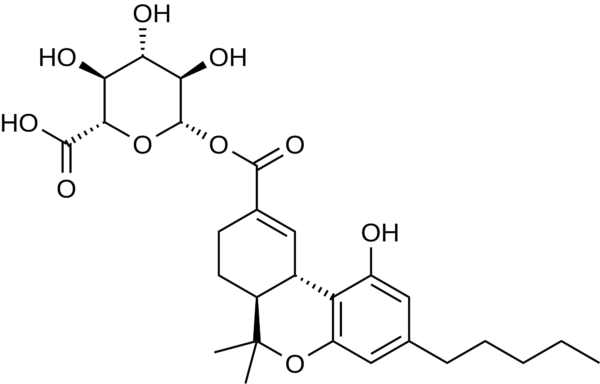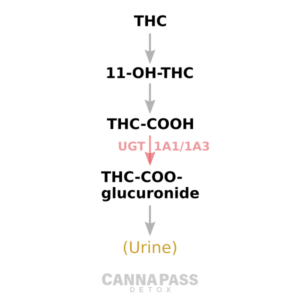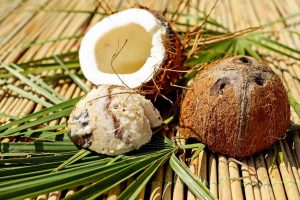
UGT1A Inhibition
UGTs are a family of enzymes found mainly in your liver. Their purpose is to attach a type of sugar molecule (called a glucuronide) to any other molecule that your body would like to excrete (drugs, toxins, etc.). The glucuronide is like a tag that makes it easier for your body to excrete things into the urine or bile.
UGT enzymes catalyze the final step in the main THC metabolism pathway to create the THC-COO-glucuronide metabolite. In fact, it is this glucuronide metabolite that is primarily excreted into the urine and detected by tests.

A 2009 study showed that two specific UGT isoforms are responsible for catalyzing this step: UGT1A1 and UGT1A3. However, no clinical studies have yet been performed that verify what happens to THC metabolism when you inhibit UGT1A1 and 1A3.
It is very reasonable to assume that with lower UGT1A1/1A3 activity, you will clear the THC-COOH metabolite more slowly. Although this will lead to higher THC-COOH levels, the impact can be minimized using the other methods in the 2 Day Detox protocol.
Despite higher THC-COOH levels, inhibiting UGT1A1/1A3 is beneficial overall, since you will form less of the glucuronide metabolite. *Keep an eye out for a new supplement with UGT inhibiting properties*
FAQ
UGT inhibition is recommended for a period of 48 hours as part of the 2 Day Detox protocol. This period should be sufficient to achieve the maximum effect.
Inhibiting UGT enzymes over a long period of time is not recommended since this can cause accumulation of bilirubin, an endogenous molecule that is normally metabolized by UGT1A1.
However, this accumulation takes time and a 2 day period of inhibition is not a safety concern.
The exact level of inhibition of UGT1A1/1A3 by various herbal extracts has not yet been verified in clinical studies. But if we conservatively say that it is possible to inhibit their activity by 30%, then urine metabolite levels should drop by 30% within 48 hours.
As with all methods in the 2 Day Detox (which focus on reducing the THC-COOH and glucuronide metabolites), this is not a permanent method.
If you still have significant fat stores of THC and 11-OH-THC, then these will eventually replenish levels of the glucuronide metabolite.
Your metabolite levels can even temporarily be higher after you stop inhibiting the UGTs since clearance of THC-COOH will have been slowed.
You should only use this method if you will not need to submit another sample for at least 2 days.

